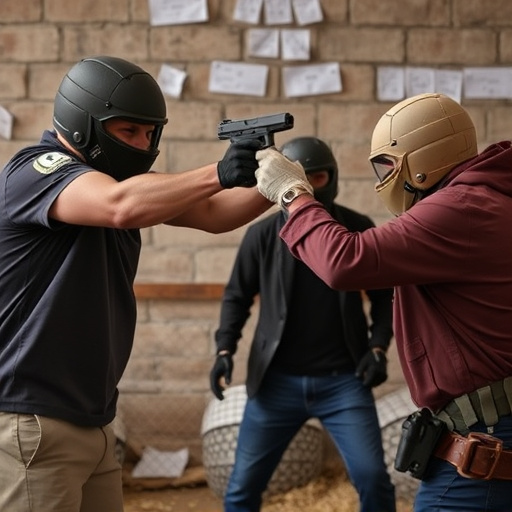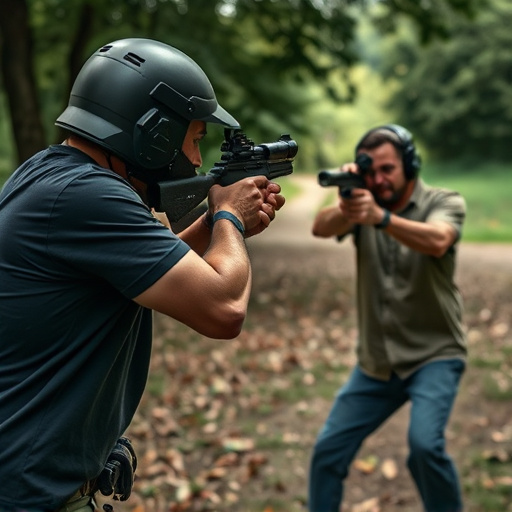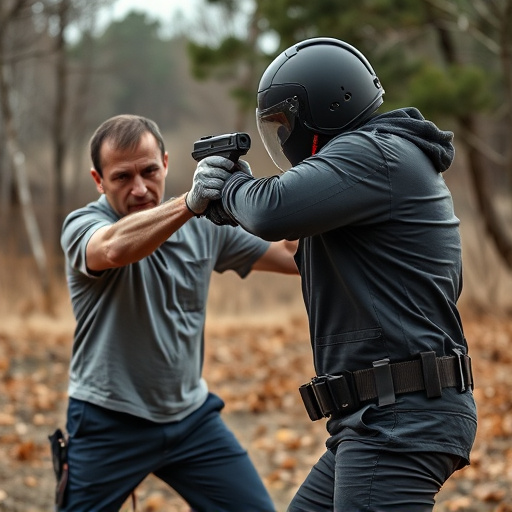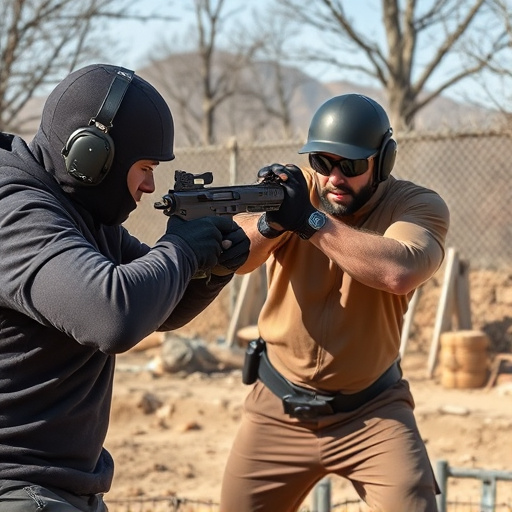Understanding how voltage interacts with clothing materials is essential for choosing effective and affordable stun guns for self-defense. Thicker, non-conductive fabrics like denim reduce current flow, while thinner, conductive fabrics like cotton allow better penetration. Proper clothing choice can enhance or hinder the performance of stun guns. Moisture in fabric can also impact current flow. Knowing these factors enables users to select attire that supports maximum stun gun effectiveness and safety. Affordable stun guns are gaining popularity for personal defense due to their accessibility, simplicity, and power to temporarily disable attackers.
Voltage penetration through thick clothing is a fascinating yet often overlooked aspect of electrical safety, especially in the context of affordable self-defense tools like stun guns. This article explores how understanding voltage and material conductivity impacts the effectiveness of these devices when used against protective garments. We delve into experiments that test penetration depth, discuss safety considerations, and examine real-world applications, providing valuable insights for those seeking effective personal protection with budget-friendly stun guns.
- Understanding Voltage and Its Effects on Clothing
- The Role of Material and Thickness in Electricity Conductivity
- Affordable Self-Defense Tools: Stun Guns and Their Effectiveness
- Testing the Penetration Depth: Experiments and Findings
- Safety Considerations when Using Stun Devices on Clothes
- Real-World Applications and User Experiences
Understanding Voltage and Its Effects on Clothing

Voltage, in simple terms, is a measure of electric potential energy. When it interacts with clothing, its effects can vary greatly depending on factors such as material composition and thickness. In the context of self-defense tools like affordable stun guns, understanding voltage penetration through clothing is crucial. Stun guns emit high-voltage electrical charges designed to incapacitate an assailant temporarily, and knowing how these charges behave when passing through fabrics is essential for their effective use.
Clothing can act as a barrier, but its effectiveness depends on the specific fabric. Some materials, like leather or thick denim, can significantly reduce voltage transmission, while others, especially thin and conductive fabrics, may allow for a greater flow of electric current. For individuals considering self-defense options with stun guns, it’s important to be aware that proper clothing choice could impact the device’s performance. Wearing non-conductive or insulative layers might enhance protection, but understanding voltage penetration can also help users make informed decisions about when and where to deploy such devices for maximum effectiveness.
The Role of Material and Thickness in Electricity Conductivity

The material and thickness of clothing play a significant role in determining how well electricity, such as that from affordable stun guns for self-defense, can penetrate. Conductive materials like metals allow electrical current to flow freely, while insulators like fabrics impede its passage. The thickness of the fabric acts as a barrier, increasing resistance to electric flow. Thicker clothing, especially those with higher insulation properties, will generally block or significantly reduce the effectiveness of stun guns, as the voltage is dissipated over a larger surface area before reaching deeper layers.
Understanding these factors is crucial for users looking to deploy self-defense tools effectively. For instance, lighter fabrics like cotton might allow better penetration than thicker materials like denim. This knowledge can help individuals make informed choices about clothing when considering self-protection measures, ensuring that their chosen attire doesn’t inadvertently limit the power of potentially life-saving devices like affordable stun guns.
Affordable Self-Defense Tools: Stun Guns and Their Effectiveness

In today’s world, personal safety is a top concern for many individuals, especially as we navigate through various environments and situations. One effective and affordable self-defense tool gaining popularity are stun guns. These compact devices offer a simple yet powerful way to deter potential attackers and provide a critical few seconds for escape. Stun guns work by delivering an electric shock that temporarily disables an assailant, allowing the user to get away safely.
The effectiveness of stun guns lies in their ease of use and accessibility. Unlike traditional weapons, stun guns require no special training or licensing, making them an attractive option for those seeking a quick and reliable means of self-defense without the legal and safety barriers associated with firearms. With various styles and designs available at affordable prices, stun guns are becoming more accessible to everyday people, empowering them to take control of their safety.
Testing the Penetration Depth: Experiments and Findings

Testing the Penetration Depth involves a series of experiments designed to mimic real-world scenarios, where various factors such as clothing material, thickness, and moisture content play a significant role. Researchers use specialized equipment to simulate the impact of different stun guns, including affordable self-defense options, on these barriers. The findings reveal that while thicker fabrics do offer some level of protection, their effectiveness is significantly reduced with each additional layer. For instance, tests showed that a cotton T-shirt and jeans combination can effectively block or greatly reduce the voltage from a standard stun gun, making it less potent against the target.
Experiments also uncovered varying penetration depths depending on the type of clothing. Moisture, as expected, acts as a conductor, increasing the likelihood of current flow through the fabric. This is particularly relevant when considering that many individuals might wear sweatshirts or hoodies in self-defense situations, which can enhance the effectiveness of a stun gun by providing an alternative path for electric current to reach the body. These insights are crucial for individuals looking for affordable stun guns for self-defense, as understanding how clothing interacts with electrical current can help them make informed decisions when choosing personal safety tools.
Safety Considerations when Using Stun Devices on Clothes

When considering self-defense options, affordable stun guns have gained popularity due to their accessibility and perceived effectiveness. However, using such devices on thick clothing presents unique challenges and safety considerations. The penetration depth of a stun device’s electrical current through layers of fabric can vary significantly based on factors like material composition, thickness, and moisture content. This variability impacts the device’s ability to deliver a powerful enough shock to incapacitate a target.
To ensure user safety, it’s crucial to select stun devices specifically designed for clothing penetration, as standard models may not perform optimally. Additionally, understanding and adhering to manufacturer guidelines regarding safe use is paramount. Users should never aim at sensitive areas like the heart or head due to potential harm. Regular maintenance and testing of stun devices are also essential to ensure they remain functional and effective in real-world scenarios.
Real-World Applications and User Experiences

In conclusion, our exploration of voltage penetration through thick clothing highlights the significant role affordable stun guns play in personal safety. Understanding the effects of voltage on clothing materials and the factors influencing electricity conductivity has led to valuable insights into these devices’ effectiveness. Through experiments and real-world applications, it’s evident that properly designed stun guns can penetrate garments, delivering a powerful shock for self-defense. However, safety considerations must be paramount to ensure responsible use, making informed choices about stun gun models crucial for individuals seeking effective yet safe personal protection.
